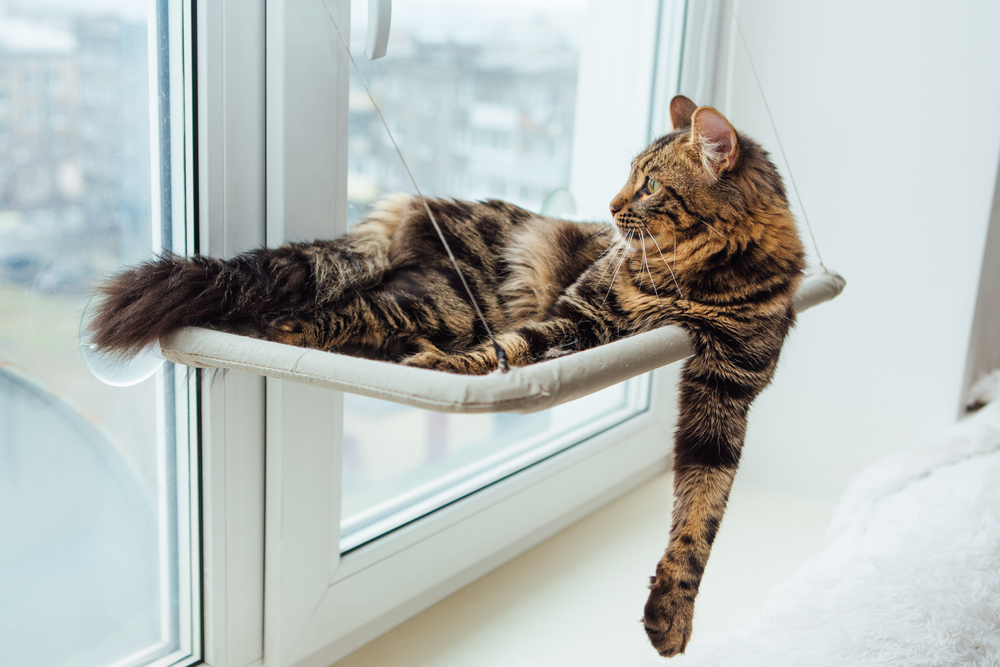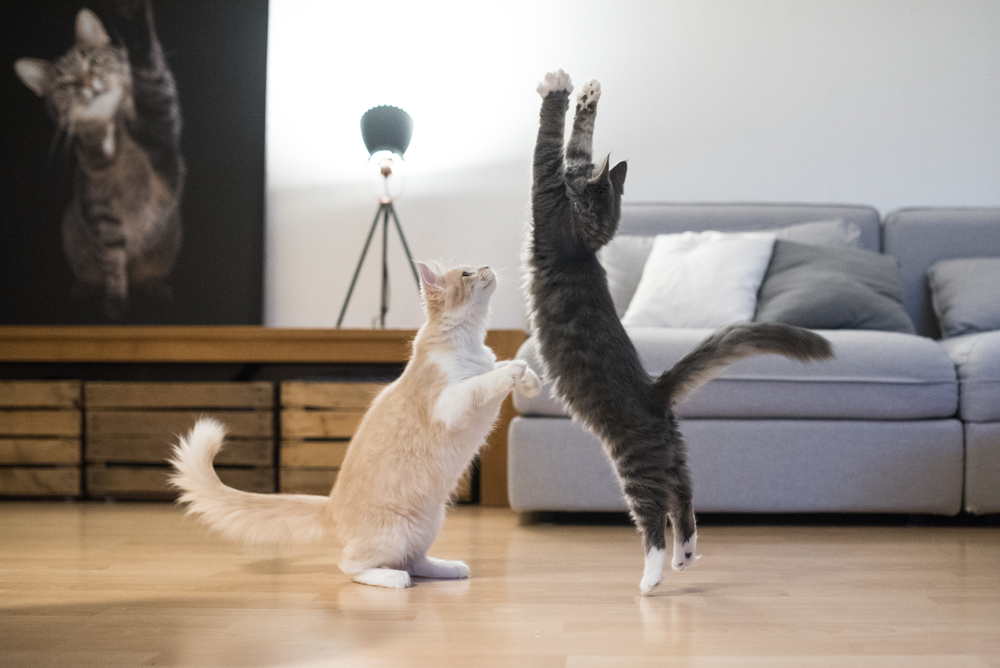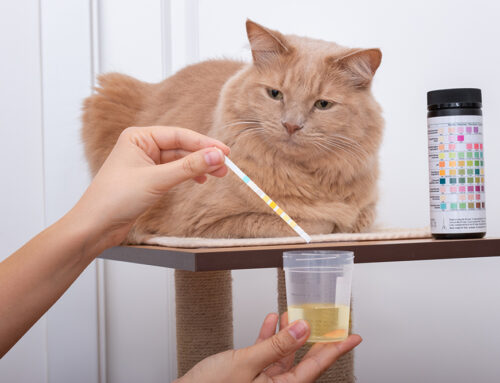Ensuring your indoor cat’s enrichment needs are fulfilled helps prevent behavioral problems and potential health complications such as feline idiopathic cystitis (FIC). To learn how to keep indoor cats happy and healthy, The Gentle Vet team discussed kitty contentedness with our feline friends who are experts in the field.
Candace, a 2-year-old calico, comments, “Ensure your cat has a safe place to hide. I get anxious and upset if I don’t have a quiet place to escape.”
The Gentle Vet (TGV): Having access to a hiding spot is important for cats to feel safe. Studies have demonstrated that cats who have a hiding place show significantly less stress than those who do not. Your cat does not need an expensive cat den to feel safe. Your cat can be content under your bed, in a cardboard box, in gaps behind the sofa, and under a blanket or towel draped over an elevated shelf. Leave your cat alone while they are in their hiding place—they need to feel secure in their safe zone.
Sammy, a 4-year-old Siamese, says, “Ensure your cat’s mealtimes are stimulating. Eating kibble from a bowl is so yesterday! Cats want to hunt for their food.”
TGV: Wild cats can hunt for food about 12 hours per day. When you simply put food in front of your cat, you prevent them from exercising their instinctual need to work for their meal Make your cat’s mealtimes more stimulating by trying the following:
- Feed your cat small, frequent meals — Feed your cat at least two to three times a day. Spreading their caloric requirement throughout the day is healthier for your cat, and helps generate interest in their food. In addition, feeding your cat more frequently usually stimulates them to drink more water.
- Hide your cat’s food — Encourage your cat to hunt for their meals by hiding their food in multiple locations around your home.
- Make mealtimes puzzling — Make your cat use their brain to access their meal by putting their kibble in a food puzzle toy.
Polly, a 7-year-old Persian, proposes, “Ensure your cat’s litter box setup is acceptable. I refuse to use my litter box if my owner doesn’t clean the box appropriately.”
TGV: Cats commonly eliminate in inappropriate places because their litter box setup is unacceptable. Proper litter box setup includes:
- Cleanliness — Scoop your cat’s litter box at least twice a day, and completely change the litter and clean the box once per week.
- Location — Cats prefer privacy when they are using their litter box, but they also want the box in a convenient location. Place your cat’s litter box in a quiet, low-traffic area that your cat can easily access.
- Number — Ensure you have enough litter boxes for every cat in your home. A good rule of thumb is to have one box for every cat and one extra.
- Size — Ensure your cat’s litter box is large enough for them to turn around easily while in the box.
- Litter — Most cats prefer a small amount of unscented litter in their box. Use unscented clumping litter, filling the box about one to two inches.
Tom, a 5-year-old yellow tabby, tells, “Ensure your cat has climbing opportunities. I’m most chill when I can survey my environment from a high vantage point.”
TGV: Cats are tree-climbing mammals who head upward for safety and enjoyment. Cats have excellent coordination and balance, which help them access high surfaces. Some furniture is specifically designed to help your cat access an elevated perch. If you prefer, provide your cat a suitable high vantage point by clearing spaces on top of your refrigerator, on bookshelves, and on a closet’s top shelves.
Melissa, a 1-year-old Maine Coon, mentions, “Ensure your cat has suitable areas to scratch. I was forced to shred my owner’s curtains before she gave me a scratching post.”
TGV: Cats have an instinctual need to scratch. Their intent is not to damage your furniture but to stretch their muscles, remove dead nail tissue, and leave scent marks from glands between their toe pads. To fulfill your cat’s scratching needs, do the following:
- Provide enough scratching posts — Provide at least one scratching post for every cat in your home, and place at least one post in every room.
- Provide the right scratching post types — Cats have different scratching styles, and they prefer various scratching surfaces. To appease your cat’s scratching preferences, provide horizontal and vertical scratching options, and offer posts covered in a variety of scratching materials.
- Stabilize the scratching posts — Ensure the scratching post is stable. If your cat knocks the post over while scratching, they may be startled and refuse to use the post again.
- Tempt your cat — Use catnip and feline pheromones to encourage your cat to use a new scratching post.
Hayley, a 3-year-old Himalayan, hints, “Ensure your cat is entertained. I get bored if my owner doesn’t provide interesting diversions.”

TGV: Cats need mental stimulation and physical activity to stay engaged. Offer your cat the following:
- Window perch — Cats enjoy watching birds and small animals outdoors. Help your curious kitty enjoy the wildlife show by providing a window perch. You can also place a bird feeder outside the window to help ensure your cat has some action to watch.
- Cat television — Several online videos are specifically posted to entertain cats.
- Interactive toys — To keep your cat active, use laser pointers, wand toys, and toys with strings attached, and schedule daily playtime with them.
Help keep your indoor cat happy and healthy by following our feline friends’ tips. If your cat is exhibiting concerning behavior, contact The Gentle Vet team, so we can determine whether your sweet kitty is simply bored or has an underlying health issue that requires veterinary treatment.








Leave A Comment